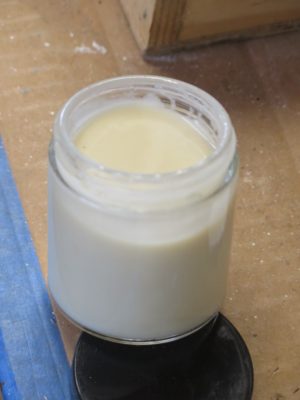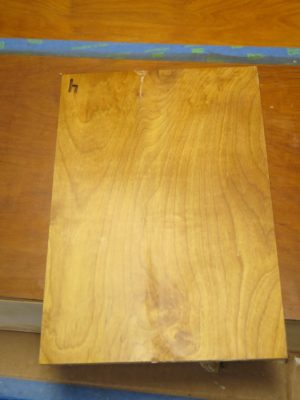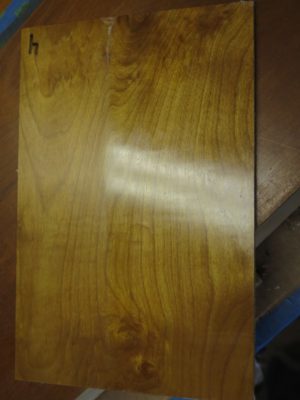Ex Poste Analysis (Mel’s Wax) – Part I, The Effect

Normally at this point of the formulation the molten polish is an almost transparent amber liquid. It usually does not obtain this white-ish opacity until after it has been transferred into the jars and cooled for an hour or so, a little longer on a warm summer day.

With a recent batch of Mel’s Wax behaving oddly, becoming white-ish much earlier in the process than I have come to expect but nevertheless attaining the expected appearance when fully cooled. This batch remained almost fully liquid when it should have congealed into a soft lotion, and I set it aside for several days to cogitate over the cause(s).



Just to make sure I was not completely misguided I tested a bit of this liquid polish to judge its performance, and it did just just fine. So I did a contemplation deep dive to consider what might have “gone wrong.” In retrospect “gone wrong” was not the correct perspective, it had just developed differently than previous batches. But still, the question was “Why?” (A second question was, “Is this a new product?”)

When I returned to the jars after letting them sit undisturbed for a week I noticed an even more distinct stratification of the contents than had been suggested immediately after the making. In fact the top quarter inch of every jar was a near-pure fraction of solvent.

Using a disposable pipette I decanted the free solvent from the top of every jar, depositing the excess into a single large paper cup. According to my digital scale the contents in each jar included 20% excess solvent. Hmm.
Once the excess was removed the emulsion polish fraction underneath the solvent fraction was much more like the polish should be, and again performed precisely as it was supposed to. This observation made me reflect not only the original formulation from 15 years ago but also my materials used the previous week. It was a noumenological exercise, a/k/a “thought experiment,” that in the end bore great fruit.
Next time – The Cause.



This is really interesting Don. I feel like Watson waiting for Sherlock to reveal the solution to the mystery!